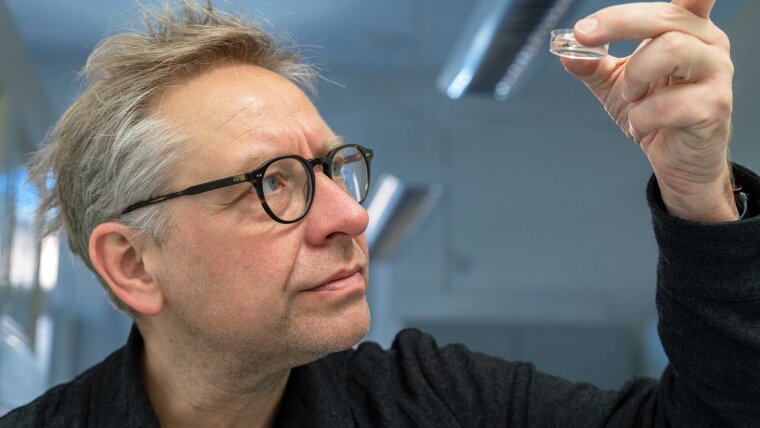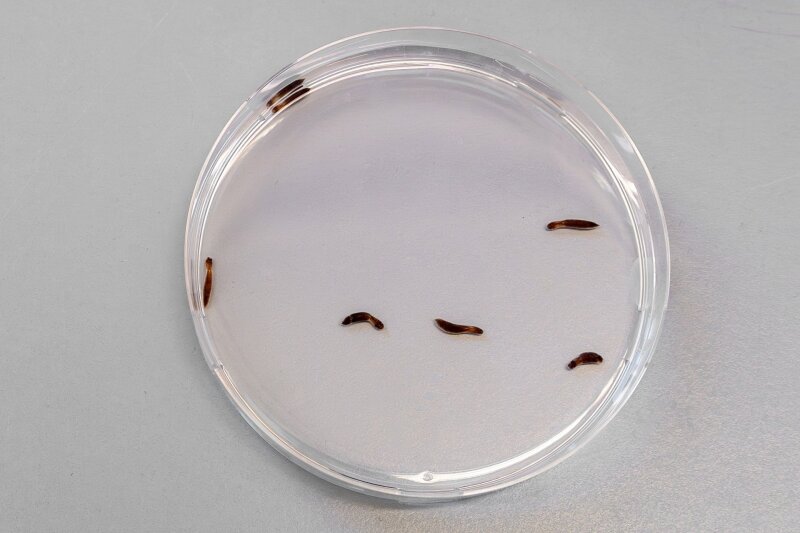
- Research
Published: | By: Sebastian Hollstein
Without the evolutionary development of a complex digestive system, there would be no large mammals, including humans. It is only thanks to the efficient processing of food that our brains can be supplied with the energy they need for all their complex thought processes. However, unlike primitive life forms, a continuous digestive tract requires not only a mouth opening but also an anus through which digestive residues leave the body.
But where does the end of our digestive system actually come from and when did it first appear in evolution? Evolutionary biologist Prof. Dr Andreas Hejnol from Friedrich Schiller University Jena, together with colleagues from the University of Bergen, has now found an answer to this question: the posterior opening first appeared in tiny worms that have existed on Earth for around 550 million years. The team presents its research findings in the research journal »Nature Ecology & Evolution«.
The animals, which belong to the Xenacoelomorpha phylum, are usually no bigger than a grain of rice and generally live on the sea floor. »Although they only have one mouth opening that takes in food and expels the waste, they are also among the first so-called bilaterians, meaning they have a symmetrical structure with a left and a right half of the body, just like mammals and humans«, says Andreas Hejnol. »They therefore occupy a very interesting position in the animal family tree.«
Same genes in the sperm duct and anus
Several years ago, the Jena-based zoologist discovered that humans and xenacoelomorphs use the same genes to form their mouth openings. He then investigated whether there were also genetic parallels that pointed to a related posterior opening—and he found what he was looking for. »Adult animals usually form a so-called gonopore at the back, a canal through which they release sperm«, explains Andreas Hejnol. »We have now discovered several genes at this opening that are also responsible for the formation of the rectum«
To ensure that these genes do not simply indicae the rear position in the body, nature provided the scientists with a helpful experiment: in a certain species of xenacoelomorphs, the so-called panther worm, the gonopore is located directly next to the mouth in the front part of the body—and it also possesses the anus genes. Furthermore, these genes are not expressed in young animals that are not yet sexually mature and do not have a sperm duct. The gonopore is therefore the decisive part of the body.
Large mammals thanks to complex digestion
In a later stage of evolution, the intestine finally connected to the sperm duct and the gonopore developed into the anus. It is not yet possible to say exactly when this happened. The xenacoelomorphs—and thus also the precursor of the anus—are around 550 million years old. It is possible that the newly created body opening initially served for digestion and reproduction, as we still see today in birds or platypuses, for example, which have a cloaca. And even in human embryos in the womb, the genitals and anus initially share an opening.
»It was only with the development of the anus that digestion became possible, with different areas with different environments gradually processing food and extracting all the nutrients bit by bit«, explains Andreas Hejnol. »Only thanks to these much more efficient processes were mammals able to grow larger and develop a brain as powerful as that of humans, which requires the most energy of all our organs.«
"Panther worms" (Hofstenia miamia) in a petri dish. The worms, which have existed for 550 million years, are among the first "Bilateria", symmetrically structured animals with a left and a right half of the body, just like mammals.
Image: Nicole Nerger (University of Jena)Original publication:
C. Andrikou et al. Molecular evidence from xenacoelomorph gonopore formation supports homology with the bilaterian anus, Nature Ecology & Evolution, 2025; DOI: 10.1038/s41559-025-02866-6; https://doi.org/10.1038/s41559-025-02866-6External link
Contact:
07743 Jena Google Maps site planExternal link
